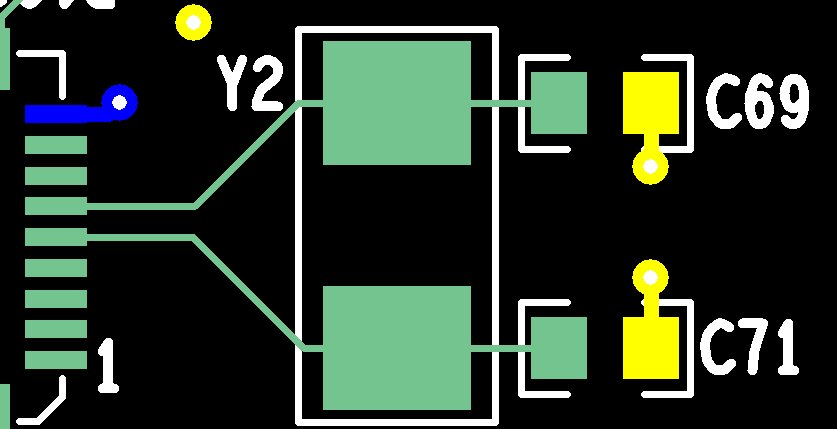What is the reason of failure of quartz oscillator?
What is the reason of failure of quartz oscillators?

The quartz oscillators is to provide the basic clock signal for the singlechip system.
Usually a system use one same quartz oscillators, which is convenient for all parts to keep synchronized.
The type and frequency of the quartz crystal used by different types of singlechip .
If there is a problem with the quartz oscillator in the singlechip ,
the one-chip computer will not work again. In the following,
we analyze the reasons why the quartz oscillators does not vibrate from two reasons :
quartz oscillator and crystal circuit .
Regarding the quartz oscillator:
1.
Selection of quartz oscillator. It is very important to choose a suitable quartz oscillator for single-chip computers.
2.
When choosing a quartz oscillator, we must be considered parameters ,such as resonance frequency,
3.
load capacitance, DLD, and temperature stability . A suitable quartz oscillator can ensure that the singlechip can work well.
4.
5.
2. The quartz oscillator is unstable due to capacitance.
The capacitors C1 and C2 which ‘s in crystal circuit have a deeply influence on the stability of the quartz oscillator.
Each quartz oscillator has its own characteristics, so we must follow the quartz oscillator manufacturer.
the lower the value of C1 and C2 mean the Electrical characteristics is more better,
although the larger value of C is beneficial to the stability of quartz crystal ,
it will increase the start-up time. In general, we make the value of C2 greater than the value of C1,
which can speed up the quartz oscillator start-up when powered on.
3. The problem caused by the excessive driving of the quartz oscillator ,
the excessive driving of the quartz oscillator will gradually lose the contact plating of the quartz oscillator
and cause of he increase of the quartz oscillator frequency. We can use an oscilloscope to detect,
OSC, the output pin, if sine wave value is clear at upper and lower values ,
the sine wave meet the clock input .on the contrary, if the sine waveform The peaks and troughs
are flattened and the waveform becomes square, then the quartz oscillator is working heavy .
At this time, it is necessary to use the resistor RS to prevent the quartz oscillator from being over working
The easiest way to judge the value of the resistor RS is connecting a 5k or 10k trimmer resistor.
we can adjust slowly from 0 to the sine wave is no longer flattened.
By this method, the closest resistance RS value can be found.
4. When drawing the PCB, the quartz oscillator should be near the amplifier circuit (IC pin),
due to the limited output capability of the quartz oscillator, which only outputs electrical energy in milliwatts.
Inside of the IC (integrated circuit), the signal can be amplified hundreds or even thousands of
times by an amplifier before it can be used normally. The quartz oscillator and the IC are connected by a copper wire in usually .
This wire can be regarded as a section of capacitor or several sections of wire.
The wire will generate current when cutting the magnetic line of force. The longer wire effect stronger current .
Regarding the application of quartz oscillator circuit:
1.
The PCB layout wrong:Now the PCB is no longer a single function circuit (digital or analog circuit),
2.
but is composed of a mixture of digital circuits and analog circuits.
Therefore, there may be problems in the PCB wiring, which may cause the quartz oscillator to not vibrate;
2. Quality problems of singlechip or quartz oscillator;
3. The capacitor does not match the quartz oscillator or there is a quality of the capacitor;
4. The PCB board is damp, resulting in impedance mismatch and unable to vibrate;
5. The traces of the quartz oscillator circuit are too long or there are traces between the two feet,
which will be caused the quartz oscillator do not vibrate. when we are wiring the PCB,
the traces of the quartz oscillator circuit should be as short as possible and as close to the oscillator as possible.
Avoid line between crystal pins.
6. The quartz oscillator cannot vibrate due to the influence of the peripheral circuit.
